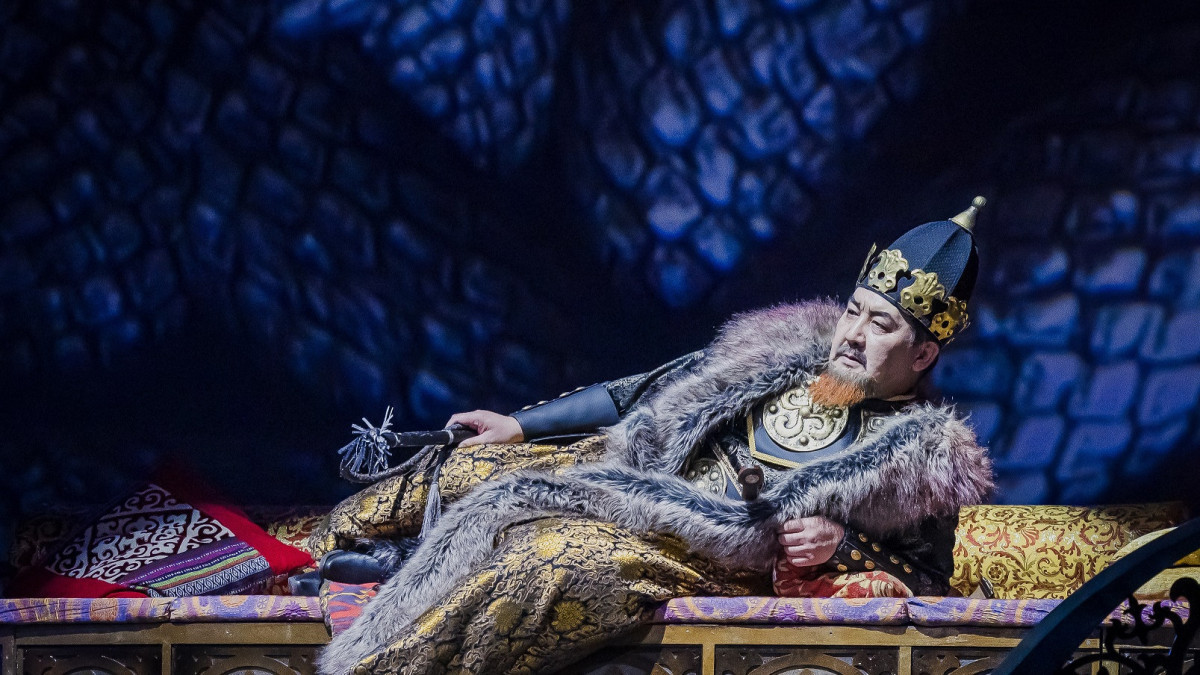Behind Astana Opera’s majestic curtain, a world of mystery and creativity is revealed. At the forefront of this magic are make-up artists. While remaining unseen themselves, they create magnificent characters, turning performers into heroes of exciting stories taking place onstage. Let us meet with them to learn about their difficulties, challenges and inspiration, El.kz cites astanaopera.kz.
A big challenge for make-up artists is creating complex and unusual make-up. At Astana Opera, they meet heroes from a wide variety of worlds: from historical productions, where portrayals of witches, sorceresses and other mythical heroes are often created, to contemporary productions, where ballerinas appear in crushing minis with catchy make-up. However, the biggest challenge for the make-up artists of the capital’s opera house is the creation of a psychological image, envisioned by the designer of a particular production. One of the most striking examples is the makeup for Taishyq Khan from Yerkegali Rakhmadiyev’s opera Alpamys. It not only requires skill in creating realistic facial features, but also injecting certain emotions into them.
“Stage director sets a task for us, telling us what emotion should be seen on the performer’s face. There is no need to radically change anything on the soloist’s face, but it is necessary to show, for example, anguish or suffering – this is the most difficult thing for me. In addition to realising the stage director and designer’s ideas, I myself must be satisfied whether this emotion was achieved or not. Besides that, all performers want to look as they should, according to their understanding of the stage director. However, the soloist can understand it in his own way, and, accordingly, will also want to change something. We need to find a middle ground, because his performance depends on his make-up. And if the soloists like their make-up, I am glad, and if they are unhappy, of course, you get upset,” Serik Basbayev, the head of the make-up department, says.
The make-up artists say that each new character presents them with new challenges, but this is what makes their work exciting and inspiring. Make-up for the ballet Snow White and the Seven Dwarfs was labor-intensive in terms of the time spent. False noses and ears for the dwarfs and witches require a lot of attention from the make-up artists, so it took them about an hour for one person.
“It does not happen that I do some character’s make-up like this today, and tomorrow I repeat it precisely. In any case, every time it will change, something will be added, even if the same performer comes to get this exact character make-up. This is creative work,” Serik Basbayev explains.
The make-up shop employs 9 people. Make-up artists are very interested in working with character parts, where they can show artistry and create portrayals. For example, in the ballet Cinderella there are many exciting characters whose portrayals are complemented by voluminous wigs. Working with them also requires a certain skill, like any woman’s hairstyle.
How do make-up artists react to the results of their work? There is certainly a moment of pleasant fatigue and joy that everything worked out. To see how soloists are reborn under their brushes, how their faces turn into recognisable heroes is an indescribable feeling. Make-up artists say that for them, work is a part of art, in which every moment is filled with creative inspiration and emotions.
Thus, Astana Opera’s make-up artists are real guardians of magic who turn the stage directors’ most daring ideas and the performers’ wishes into reality. Their work is interesting, technically challenging, and also rich in the inner world of creativity and magic.
 Subscribe to our Telegram channel and be the first to know the news!
Subscribe to our Telegram channel and be the first to know the news!
